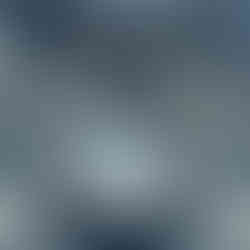13. The German Voigtländer Brillant
- Camera Nanny

- Sep 18, 2023
- 3 min read

Some people enjoy shopping for new clothes. I like shopping for old cameras!
I browse the fabulous Living Image vintage camera museum website, looking for the next one which appeals to me. Sometimes I'm looking at a particular era, sometimes I just spot one I like the look of. Then I scour auction sites for a suitable version, generally spending no more than £25-30. The Voigtlander Brillant was made from 1932 in black pressed steel; by 1937 it was made in Bakelite (a sort of early plastic).
When I first saw this camera, I thought it had two lenses. In fact the upper 'lens' is the input of the reflector viewfinder. Its large size lets in plenty of light, giving a bright & brilliant (German: brillant) view to set up your photo. This was a major step up from other cameras of the period, which still relied on a quite tiny viewfinder held at waist-level. Other than that distinct advantage, it is a simple box camera with basic controls. The shutter can be set at Bulb, 1/25 and 1/50, still very slow by today's standards. The aperture markings are 7.7, 11 or 22, and the focusing ring has basic zones: Portrait, Group or Landscape, marked on the camera in German as Porträt, Gruppe and Landschaft. Later versions were made for the UK market (called Brilliant rather than Brillant), but I only went shopping for the original German one, because...I don't know, it just seemed important! From the serial number I found that mine was produced in 1933.
As with all my vintage cameras, I start off by examining the external controls, lens glass, viewfinder, shutter and internal parts. The great thing about old cameras is that nothing is glued together, there are often screws or other manual mechanisms which can be removed for repairs and cleaning. I use spectacle wipes (box of 50 for £1 in a cheapy shop) and wrap them around cotton buds to get into crevices. The glass is often grimy so I start there.
With the lens unscrewed from the front of the camera, I get my first look at the mechanism for changing the aperture and shutter speed. Simple rotating metal discs are moved by surprisingly sharp wheels like a cog. Several teeny weeny screws later and the whole thing is in quite a few bits ready to clean and give a very gently oil.

I love the ingenuity of all the interlocking
parts, each designed with a specific purpose, there is no form over function here. And because of that, it's easier to actually see why the shutter lever sometimes doesn't return to its position. After a little tinkering with a tiny screwdriver and a dot of oil, it's all functioning smoothly and it's time to move on.
I'm interested to learn that Voigtländer were originally manufacturers of scientific instruments through the 19th century, cameras were a later addition to their repertoire. Apparently they employed a mathematician to work out the calculations for the glass lenses.
The inside looks fairly clean, so with it all back together it's time to load a film.
As with many cameras of this age it uses medium format 120 film which I buy locally. There is what turns out to be a very rudimentary frame counter. It takes a little while to work out, but essentially it's a metal wheel which runs across the edge of the film as you wind on, and which turns a bigger wheel displaying the next frame through a little window on the side. A tiny, fiddly button opposite the frame window returns the counter to 1 when you load a new film.

After a test with an expired film it's clear that this mechanism is so rudimentary as to be frankly useless. The little wheel doesn't turn consistently as the film is wound on, so that huge gaps are created between each frame, or, more frequently, the frames overlap. Luckily I spot an orange 'viewing window underneath the camera, allowing me to see (but only just) the film numbering itself on the backing paper. I'll go by that!
The first roll of film, straight off the camera, are all over exposed. The shutter speed is only 1/25 or 1/50, and with my film speed of ISO100 on a very sunny day, it's difficult to cut down the light. But hey ho, that's what post-processing is for!
The second roll of film I shoot entirely at an aperture of f22, reducing the light reaching the film. More contrast but some slightly dodgy focusing in a couple of shots due to me not taking my time.
Soooooo.... what shall I buy next?




















































Comments